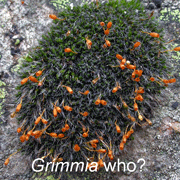How many plant species are there? Facing success, some taxonomists falter
In Nature 13 april 2006 “Gardens in full bloom” by Emma Marris highlights the increasing importance of botanical gardens as centers of molecular research. One scientific goal is to compile a working list of known plant species. According to Nature, “plans for the ultimate database inevitably lead to talk of DNA barcoding. If species-specific differences in defined DNA sequences were matched with a species name in some kind of database, an untrained person could use a sequence or a DNA-chip to read the barcode in a botanical sample, send it to the database, and get back a name and all other necessary taxonomic data….Apart from its undoubted geeky appeal, such a technology would in principle save a lot of time and drudgery. Carrying out identifications for colleagues at home and round the world is time consuming and uncompensated. The use of barcoding would free up people to do their own research.”
But Peter Raven, Missouri Botanical garden, is cautious about such a scheme. He worries about how much time and effort it would take and asks “what would one do with barcodes for the 13,000 or so moss species?”
Raven’s question is like a cosmologist asking “why map the distribution of galaxies?” There is likely no way to understand the origins and patterning of biodiversity other than counting species and mapping their distributions. A rapid, simple method for identifying specimens such as DNA barcoding can make this possible. Studying a species-rich group of early terrestrial colonizers such as mosses, which live in some of the coldest and dryest environments as well as in the tropics, and provide habitats for a variety of invertebrates, might be a good place to start.
 DNA analysis can also help identify new moss species. In “Cryptic species within the cosmopolitan desiccation-tolerant moss Grimmia laevigata“, Fernandez et al describe 2 cryptic species with overlapping geographic distributions. Their samples were collected only in California, so a world survey might reveal many more hidden species. The authors conclude “the results emphasize the need to make molecular characterization of species a standard part of ecological analyses of populations and communities”.
DNA analysis can also help identify new moss species. In “Cryptic species within the cosmopolitan desiccation-tolerant moss Grimmia laevigata“, Fernandez et al describe 2 cryptic species with overlapping geographic distributions. Their samples were collected only in California, so a world survey might reveal many more hidden species. The authors conclude “the results emphasize the need to make molecular characterization of species a standard part of ecological analyses of populations and communities”.
This entry was posted on Monday, May 8th, 2006 at 10:36 pm and is filed under barcode performance, General, Papers. You can follow any responses to this entry through the RSS 2.0 feed. Both comments and pings are currently closed.